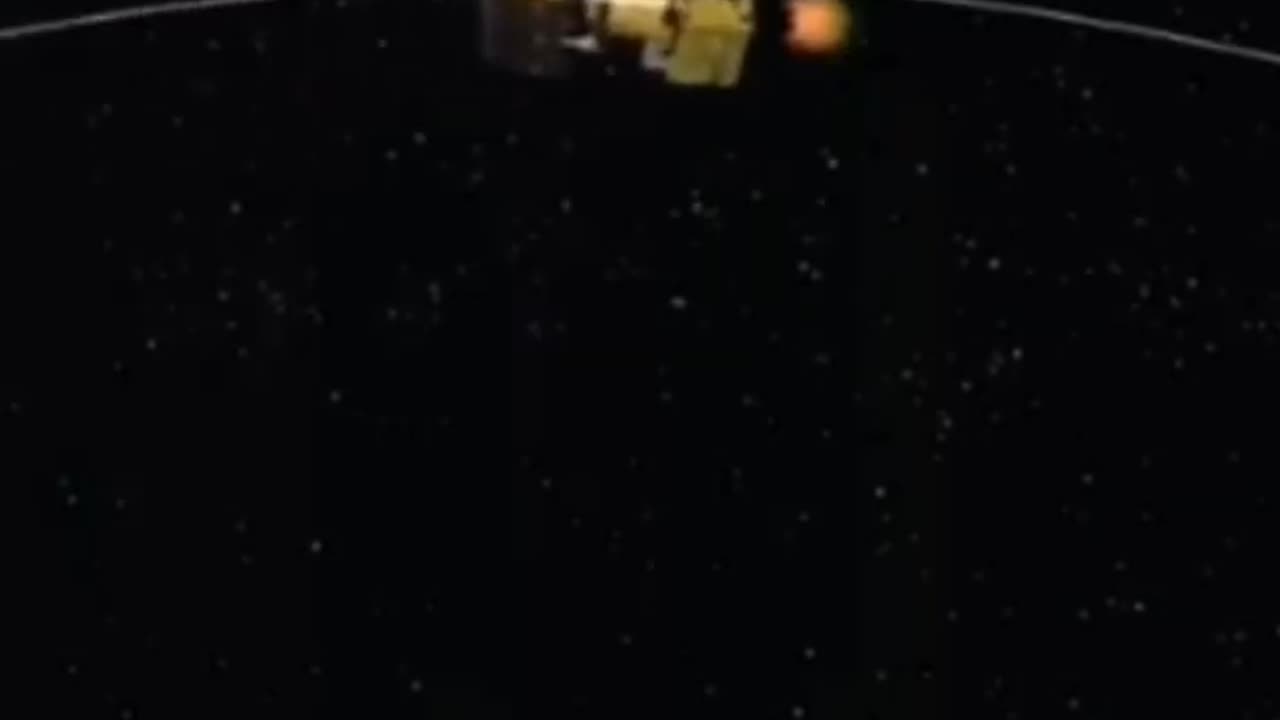Premium Only Content

Chandrayaan 3 soft landing on moon
Chandrayaan 3 soft landing on moon, proud for Indian , space mission, successful.
Chandrayaan-3 is the third of an ongoing series of outer space missions by the Indian Space Research Organization (ISRO) for the exploration of the Moon. The program incorporates a lunar orbiter, an impactor, a soft lander and a rover spacecraft.
The lunar South Pole region holds particular interest for scientific exploration due to studies that show large amounts of ice there. Mountainous terrain and unpredictable lighting conditions not only protect the ice from melting, but also make landing scientific probes there a challenging undertaking. This ice could contain solid-state compounds that would normally melt under warmer conditions elsewhere on the Moon, compounds which could provide insight into lunar, Earth, and Solar System history. Ice could also be used as a source of drinking water and hydrogen for fuel and oxygen for future manned missions and outposts.[15][16]
The European Space Tracking network (ESTRACK), operated by the European Space Agency (ESA), is supporting the mission. Under a new cross-support arrangement, ESA tracking support could be provided for upcoming ISRO missions such as those of India's first human spaceflight programme, Gaganyaan, and the Aditya-L1 solar research mission. In return, future ESA missions will receive similar support from ISRO's own tracking stations.[17]Chandrayaan-3 is the third of an ongoing series of outer space missions by the Indian Space Research Organization (ISRO) for the exploration of the Moon. The program incorporates a lunar orbiter, an impactor, a soft lander and a rover spacecraft.
The lunar South Pole region holds particular interest for scientific exploration due to studies that show large amounts of ice there. Mountainous terrain and unpredictable lighting conditions not only protect the ice from melting, but also make landing scientific probes there a challenging undertaking. This ice could contain solid-state compounds that would normally melt under warmer conditions elsewhere on the Moon, compounds which could provide insight into lunar, Earth, and Solar System history. Ice could also be used as a source of drinking water and hydrogen for fuel and oxygen for future manned missions and outposts.[15][16]
The European Space Tracking network (ESTRACK), operated by the European Space Agency (ESA), is supporting the mission. Under a new cross-support arrangement, ESA tracking support could be provided for upcoming ISRO missions such as those of India's first human spaceflight programme, Gaganyaan, and the Aditya-L1 solar research mission. In return, future ESA missions will receive similar support from ISRO's own tracking stations.[17]Chandrayaan-3 is the third of an ongoing series of outer space missions by the Indian Space Research Organization (ISRO) for the exploration of the Moon. The program incorporates a lunar orbiter, an impactor, a soft lander and a rover spacecraft.
The lunar South Pole region holds particular interest for scientific exploration due to studies that show large amounts of ice there. Mountainous terrain and unpredictable lighting conditions not only protect the ice from melting, but also make landing scientific probes there a challenging undertaking. This ice could contain solid-state compounds that would normally melt under warmer conditions elsewhere on the Moon, compounds which could provide insight into lunar, Earth, and Solar System history. Ice could also be used as a source of drinking water and hydrogen for fuel and oxygen for future manned missions and outposts.[15][16]
The European Space Tracking network (ESTRACK), operated by the European Space Agency (ESA), is supporting the mission. Under a new cross-support arrangement, ESA tracking support could be provided for upcoming ISRO missions such as those of India's first human spaceflight programme, Gaganyaan, and the Aditya-L1 solar research mission. In return, future ESA missions will receive similar support from ISRO's own tracking stations.[17]Chandrayaan-3 is the third of an ongoing series of outer space missions by the Indian Space Research Organization (ISRO) for the exploration of the Moon. The program incorporates a lunar orbiter, an impactor, a soft lander and a rover spacecraft.
The lunar South Pole region holds particular interest for scientific exploration due to studies that show large amounts of ice there. Mountainous terrain and unpredictable lighting conditions not only protect the ice from melting, but also make landing scientific probes there a challenging undertaking. This ice could contain solid-state compounds that would normally melt under warmer conditions elsewhere on the Moon, compounds which could provide insight into lunar, Earth, and Solar System history. Ice could also be used as a source of drinking water and hydrogen for fuel and oxygen for future manned missions and outposts.[15][16]
The European Space Tracking network (ESTRACK), operated by the European Space Agency (ESA), is supporting the mission. Under a new cross-support arrangement, ESA tracking support could be provided for upcoming ISRO missions such as those of India's first human spaceflight programme, Gaganyaan, and the Aditya-L1 solar research mission. In return, future ESA missions will receive similar support from ISRO's own tracking stations.[17] Chandrayaan-3 is the third of an ongoing series of outer space missions by the Indian Space Research Organization (ISRO) for the exploration of the Moon. The program incorporates a lunar orbiter, an impactor, a soft lander and a rover spacecraft.
The lunar South Pole region holds particular interest for scientific exploration due to studies that show large amounts of ice there. Mountainous terrain and unpredictable lighting conditions not only protect the ice from melting, but also make landing scientific probes there a challenging undertaking. This ice could contain solid-state compounds that would normally melt under warmer conditions elsewhere on the Moon, compounds which could provide insight into lunar, Earth, and Solar System history. Ice could also be used as a source of drinking water and hydrogen for fuel and oxygen for future manned missions and outposts.[15][16]
The European Space Tracking network (ESTRACK), operated by the European Space Agency (ESA), is supporting the mission. Under a new cross-support arrangement, ESA tracking support could be provided for upcoming ISRO missions such as those of India's first human spaceflight programme, Gaganyaan, and the Aditya-L1 solar research mission. In return, future ESA missions will receive similar support from ISRO's own tracking stations.[17]Chandrayaan-3 is the third of an ongoing series of outer space missions by the Indian Space Research Organization (ISRO) for the exploration of the Moon. The program incorporates a lunar orbiter, an impactor, a soft lander and a rover spacecraft.
The lunar South Pole region holds particular interest for scientific exploration due to studies that show large amounts of ice there. Mountainous terrain and unpredictable lighting conditions not only protect the ice from melting, but also make landing scientific probes there a challenging undertaking. This ice could contain solid-state compounds that would normally melt under warmer conditions elsewhere on the Moon, compounds which could provide insight into lunar, Earth, and Solar System history. Ice could also be used as a source of drinking water and hydrogen for fuel and oxygen for future manned missions and outposts.[15][16]
The European Space Tracking network (ESTRACK), operated by the European Space Agency (ESA), is supporting the mission. Under a new cross-support arrangement, ESA tracking support could be provided for upcoming ISRO missions such as those of India's first human spaceflight programme, Gaganyaan, and the Aditya-L1 solar research mission. In return, future ESA missions will receive similar support from ISRO's own tracking stations.[17]Chandrayaan-3 is the third of an ongoing series of outer space missions by the Indian Space Research Organization (ISRO) for the exploration of the Moon. The program incorporates a lunar orbiter, an impactor, a soft lander and a rover spacecraft.
The lunar South Pole region holds particular interest for scientific exploration due to studies that show large amounts of ice there. Mountainous terrain and unpredictable lighting conditions not only protect the ice from melting, but also make landing scientific probes there a challenging undertaking. This ice could contain solid-state compounds that would normally melt under warmer conditions elsewhere on the Moon, compounds which could provide insight into lunar, Earth, and Solar System history. Ice could also be used as a source of drinking water and hydrogen for fuel and oxygen for future manned missions and outposts.[15][16]
The European Space Tracking network (ESTRACK), operated by the European Space Agency (ESA), is supporting the mission. Under a new cross-support arrangement, ESA tracking support could be provided for upcoming ISRO missions such as those of India's first human spaceflight programme, Gaganyaan, and the Aditya-L1 solar research mission. In return, future ESA missions will receive similar support from ISRO's own tracking stations.[17]Chandrayaan-3 is the third of an ongoing series of outer space missions by the Indian Space Research Organization (ISRO) for the exploration of the Moon. The program incorporates a lunar orbiter, an impactor, a soft lander and a rover spacecraft.
The lunar South Pole region holds particular interest for scientific exploration due to studies that show large amounts of ice there. Mountainous terrain and unpredictable lighting conditions not only protect the ice from melting, but also make landing scientific probes there a challenging undertaking. This ice could contain solid-state compounds that would normally melt under warmer conditions elsewhere on the Moon, compounds which could provide insight into lunar, Earth, and Solar System history. Ice could also be used as a source of drinking water and hydrogen for fuel and oxygen for future manned missions and outposts.[15][16]
The European Space Tracking network (ESTRACK), operated by the European Space Agency (ESA), is supporting the mission. Under a new cross-support arrangement, ESA tracking support could be provided for upcoming ISRO missions such as those of India's first human spaceflight programme, Gaganyaan, and the Aditya-L1 solar research mission. In return, future ESA missions will receive similar support from ISRO's own tracking stations.[17]Chandrayaan-3 is the third of an ongoing series of outer space missions by the Indian Space Research Organization (ISRO) for the exploration of the Moon. The program incorporates a lunar orbiter, an impactor, a soft lander and a rover spacecraft.
The lunar South Pole region holds particular interest for scientific exploration due to studies that show large amounts of ice there. Mountainous terrain and unpredictable lighting conditions not only protect the ice from melting, but also make landing scientific probes there a challenging undertaking. This ice could contain solid-state compounds that would normally melt under warmer conditions elsewhere on the Moon, compounds which could provide insight into lunar, Earth, and Solar System history. Ice could also be used as a source of drinking water and hydrogen for fuel and oxygen for future manned missions and outposts.[15][16]
The European Space Tracking network (ESTRACK), operated by the European Space Agency (ESA), is supporting the mission. Under a new cross-support arrangement, ESA tracking support could be provided for upcoming ISRO missions such as those of India's first human spaceflight programme, Gaganyaan, and the Aditya-L1 solar research mission. In return, future ESA missions will receive similar support from ISRO's own tracking stations.[17]
-
 LIVE
LIVE
JuicyJohns
2 hours ago🟢#1 REBIRTH PLAYER 10.2+ KD🟢 !loadout
130 watching -
 LIVE
LIVE
Wendy Bell Radio
6 hours agoDemocrats Are As Fake As Russian Collusion
10,406 watching -
 48:34
48:34
Randi Hipper
1 hour agoBITCOIN TAKES OVER WALL STREET AS IT NEARS ALL TIME HIGHS
6.28K -
 57:51
57:51
MTNTOUGH Podcast w/ Dustin Diefenderfer
8 hours agoSam Mackey: From Juvenile Hall to a New Start in the Military | MTNPOD #126
6.48K -
 LIVE
LIVE
Matt Kohrs
12 hours agoMarket Open: New Highs, Breaking Trade News & Tech Earnings Report || Live Trading
693 watching -
 1:08:41
1:08:41
JULIE GREEN MINISTRIES
3 hours agoUNPRECEDENTED CHANGE IS COMING TO THE TAX SYSTEM IN THE UNITED STATES
109K155 -
 1:21:44
1:21:44
Chicks On The Right
5 hours agoPot-Banging for Gaza? Sydney Sweeney Backlash & Harry Enten UNLOADS on Candace | Chicks on the Right
25K10 -
 1:08:18
1:08:18
Game On!
19 hours agoAre The Colts a SERIOUS Super Bowl Contender?
27.1K -
 LIVE
LIVE
BBQPenguin_
4 hours agoTasking & PVP!
47 watching -
 LIVE
LIVE
FyrBorne
13 hours ago🔴Warzone M&K Sniping: Birthday Stream! Come On In For Cake and Sniping
45 watching